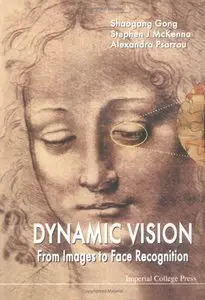Shaogang Gong, Alexandra Psarrou and Stephen J. McKenna, "Dynamic Vision: From Images to Face Recognition (Image Processing)"
English | ISBN: 1860941818 | 2000 | PDF | 344 pages | 24 MB
English | ISBN: 1860941818 | 2000 | PDF | 344 pages | 24 MB
Face recognition is a task that the human vision system seems to perform almost effortlessly, yet the goal of building computer-based systems with comparable capabilities has proven to be difficult. The task implicitly requires the ability to locate and track faces through often complex and dynamic scenes. Recognition is difficult because of variations in factors such as lighting conditions, viewpoint, body movement and facial expression. Although evidence from psychophysical and neurobiological experiments provides intriguing insights into how we might code and recognise faces, its bearings on computational and engineering solutions are far from clear. The study of face recognition has had an almost unique impact on computer vision and machine learning research at large. It raises many challenging issues and provides a good vehicle for examining some difficult problems in vision and learning. Many of the issues raised are relevant to object recognition in general.
This book describes the latest models and algorithms that are capable of performing face recognition in a dynamic setting. The key question is how to design computer vision and machine learning algorithms that can operate robustly and quickly under poorly controlled and changing conditions. Consideration of face recognition as a problem in dynamic vision is perhaps both novel and important. The algorithms described have numerous potential applications in areas such as visual surveillance, verification, access control, video-conferencing, multimedia and visually mediated interaction.
The book will be of special interest to researchers and academics involved in machine vision, visual recognition and machine learning. It should also be of interest to industrial research scientists and managers keen to exploit this emerging technology and develop automated face and human recognition systems. It is also useful to postgraduate students studying computer science, electronic engineering, information or systems engineering, and cognitive psychology.



